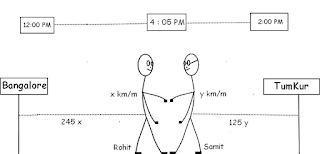Right Way To Find The Average Speed
What was the given data?
If you are finding average speed of 2 given speeds as (Speed 1 + Speed 2)/2 then you are getting tricked by questioner. The speed itself is a distance covered per unit i.e. Speed = Distance/Time. Calculating average speed like that means,you are doing like,
Average Speed = (Speed1 + Speed2)/2
= (Distance1/Time1 + Distance 2/Time2)/2
So you need to find the total distance traveled & the total time taken to complete the entire journey.It should be like,
Average Speed = Total Distance/Total Time
= (Distance1 + Distance2)/(Time1 + Time2)
In the given problem, let D be the distance traveled by car to the office. Let T1 be the time required to go to the office & T2 be the time to return back.
Since, Speed = Distance / Time, Time = Distance / Speed.
Hence,
T1 = D / 20
T2 = D / 30
Now,
Total distance traveled = D + D = 2D, Total Time taken = T1 + T2
Hence,
Average Speed = 2D / (T1 + T2)
Average Speed = 2D / (D/20 + D/30)
Average Speed = 2D / (50D/600)
Average Speed = 2D / (D / 12)
Average Speed = 24 miles/hr.
Therefore, the average speed of the journey is 24 miles/hr not 25 miles/hr [(20 + 30)/2].
































